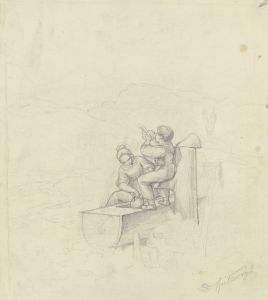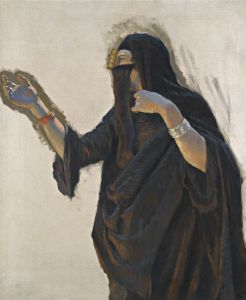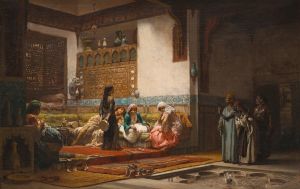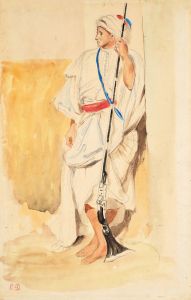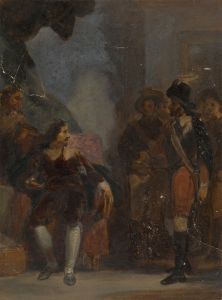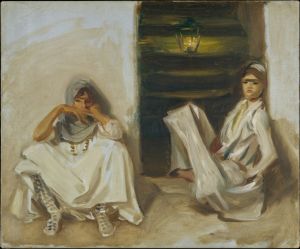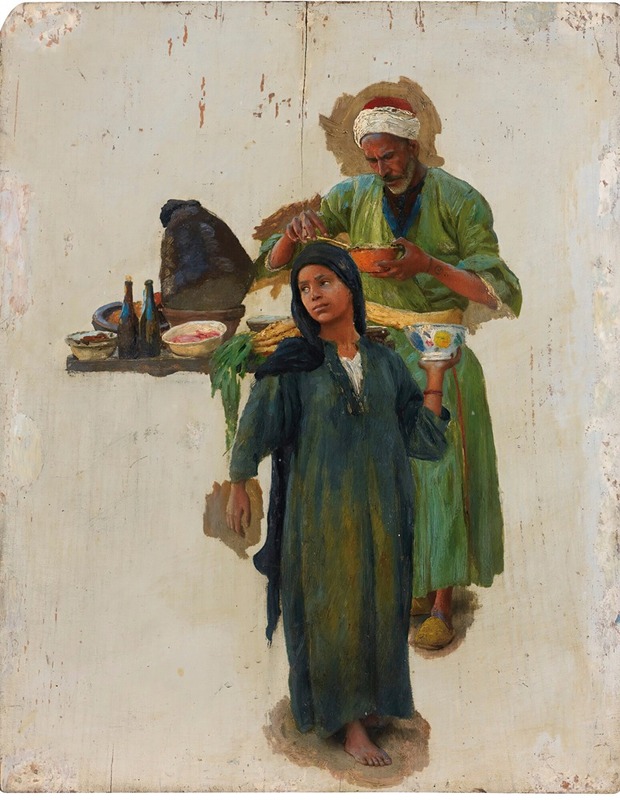
Study Of A Man And A Girl Holding A Bowl
A hand-painted replica of Ludwig Deutsch’s masterpiece Study Of A Man And A Girl Holding A Bowl, meticulously crafted by professional artists to capture the true essence of the original. Each piece is created with museum-quality canvas and rare mineral pigments, carefully painted by experienced artists with delicate brushstrokes and rich, layered colors to perfectly recreate the texture of the original artwork. Unlike machine-printed reproductions, this hand-painted version brings the painting to life, infused with the artist’s emotions and skill in every stroke. Whether for personal collection or home decoration, it instantly elevates the artistic atmosphere of any space.
Ludwig Deutsch was an Austrian painter known for his detailed and vibrant depictions of Orientalist themes. Born in Vienna in 1855, Deutsch studied at the Academy of Fine Arts in Vienna before moving to Paris, where he spent much of his career. He became associated with the Orientalist movement, which was characterized by Western artists' fascination with the cultures, people, and landscapes of the Middle East and North Africa. Deutsch's works are celebrated for their meticulous attention to detail and vivid portrayal of scenes that capture the imagination of the Western audience.
"Study Of A Man And A Girl Holding A Bowl" is one of Deutsch's lesser-known works. While specific details about this painting are scarce, it is consistent with Deutsch's style, which often included figures in traditional Middle Eastern attire, set against richly detailed backgrounds. His paintings typically reflect a romanticized view of the East, a common trait among Orientalist artists of the time. Deutsch's works are noted for their photographic realism, achieved through his precise brushwork and careful attention to the play of light and shadow.
In "Study Of A Man And A Girl Holding A Bowl," Deutsch likely employed his characteristic approach to composition and detail. The painting would typically feature figures dressed in traditional garments, possibly engaged in a moment of daily life or a culturally significant activity. The inclusion of a bowl suggests a scene that might involve an offering, a meal, or a ritual, though without specific documentation, the exact context remains speculative.
Deutsch's paintings often reflect his extensive travels and studies of the regions he depicted. He was known to collect photographs and artifacts, which he used as references for his works. This practice allowed him to create highly detailed and authentic representations, even if the scenes themselves were idealized or imagined. His ability to capture the textures of fabrics, the intricate designs of architecture, and the nuanced expressions of his subjects contributed to his reputation as a master of Orientalist painting.
The Orientalist movement, while popular in its time, has been critiqued for its portrayal of Eastern cultures through a Western lens, often perpetuating stereotypes and exoticism. Deutsch's work, like that of many Orientalists, is viewed today with a more critical eye, recognizing both its artistic merit and its role in shaping Western perceptions of the East.
Ludwig Deutsch's legacy is preserved in collections around the world, and his paintings continue to be studied for their technical brilliance and cultural significance. "Study Of A Man And A Girl Holding A Bowl," while not as widely recognized as some of his other works, exemplifies the qualities that define Deutsch's contribution to the Orientalist genre. His ability to blend realism with the exotic allure of the East remains a testament to his skill and the enduring fascination with cross-cultural encounters in art.





